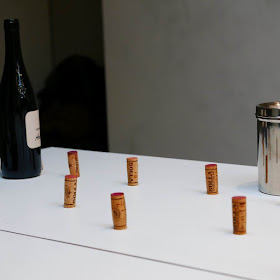As the world of wine turns from Bordeaux to Italy and Verona, there will be plenty of bottles opened in the coming days and weeks. None the less of them will be local bottles, in the various trattoria and bars around the city.
In one of my first visits to Vinitaly, long ago and far away, Valpolicella was the house wine of Verona. During those simpler times, Valpolicella had a secure place. But as the wine tower of Babel rose - the wine “to drink cool, with light summery dishes,” as Cyril Ray waxed half a century ago in The Wines of Italy – Valpolicella came out of its youthful fog into an age of hyper self-awareness. The spotlight shone on the region- eyes were on it – and the wine was pushed to become “fuller in flavor and deeper in colour.”
Because of its enormous popularity in the United States (just do a search for “YouTube + Bolla Valpolicella”), money poured into the region from wine sales revenue. “Love makes people happy,” Franco Bolla murmured to his wife in the successful TV ads, which discharged all across America in the ‘70’s and ‘80’s. America was entering into a love affair with Italy, and the invasion of Italian culture, music, art, fashion, food and wine was set in motion. It wasn’t limited to the Bolla family; the Veneto people are very industrious. And ambitious winemakers were looking to differentiate themselves from their neighbors.
Burton Anderson noted it in his trailblazing work, Vino, in 1980. While many books on Italian wine recounted the regions and the wines, sometimes even the grapes, Anderson told stories about the people. And he turned some of them into superstars. Vino was where I first heard about Giuseppe Quintarelli, whom Anderson recounted praise of the winemaker from another giant in Italian wine writing, Mario Soldati. Here’s what Anderson said: “Mario Soldati, in his first volume of Vino a Vino, determined that Quintarelli’s must be the Valpolicella closest to that described by Hemingway in Across the River.”
Therein lies the conundrum for today’s wine-lover looking to find their love in Valpolicella, a “love (that) makes people happy.” Is it light? Is it rich? Is it heavy? Is it fresh? Is it affordable?
Quintarelli is a marvelous choice. But at an average price of US $76 (Wine-searcher) it doesn’t radiate affordability for everyday. Not to say it isn’t worth it. It’s a gorgeous wine. There are other producers as well. Corte Sant’Alda’s “Ca’ Fiui” Valpolicella has an average price of US $16 (Wine-searcher) when you can find it. Organically grown and managed via bio-dynamic principles, hand harvested and fermented in large oak vats on its native yeasts. This would be my go-to Valpolicella, one which I have the funds for on a regular basis, but also one which is lively and fresh without becoming brawny and overly masculine, a problem which vexes me with the spate of inexpensive, testosterone-laden Ripasso wines that are rushed to the marketplace.
There isn’t enough room here to go into the Rape by Ripasso, which with beefed-up entries has contorted the idea of Valpolicella to the wine-going public in America. The onus isn’t just on the producers. Somewhere along the line, the consumer developed a liking for a richer, more unctuous supercharged-Valpolicella. Nino Francheschetti told Burton Anderson about Masi’s Ripasso wine, Campofiorin, ‘If you want to know the truth, I started doing it because I didn’t want to waste those good Amarone lees. It was an economically motivated experiment that produced a very pleasing result. I understand other wineries are doing the same now.” What started out as a means to preserve something has presented a challenge to the original idea of Valpolicella.
And as water seeks its own level, so will wine (it is after all 86% water, +/-). The mania for a Valpolicella Ripasso, perhaps to compete with Yellow Tail Shiraz, or Argentinian Malbec, might have pushed producers past the overflow point. But anyone who carries a wine bag (in the wine trade) knows what I mean. We may all want to sit in our cave, facing east, contemplating Quintarelli, but the world in motion (and in commerce) has a different rhythm. Which means, there has been an insatiable thirst for Valpolicella Ripasso, cheap and cheerful and with enhanced octane. But tides do turn.
Perhaps the current rosé mania is partially to blame. People are looking back towards lighter, fresher wines, like the Valpolicella of Hemingway’s time, “light dry red and cordial.” Or even, with a stretch, to the time when Dino and Sinatra swooned over spaghetti and Bolla Valpolicella in Palm Springs. Everything is cyclical. I hope the charm that brought so many young American’s to the Italian table – as Valpolicella did – is resurfacing.
Of course, let those who want Ripasso be satiated. After all, why waste those good Amarone lees? Maria Marta Galli (of Le Ragose fame) told Anderson, “Valpolicella is an underestimated wine,” in 1980. Would that we could have another taste of such a beautiful thing, as Patricia Guy writes about “Rediscovering lost flavors – not the husky, dusky, wood-laden numbers which strut off with their prizes. Rather they are the kind of wines that you can invite home to dinner.”
Can I get an Amen?
written and photographed (in Valpolicella) by Alfonso Cevola limited rights reserved On the Wine Trail in Italy
wine blog + Italian wine blog + Italy W






